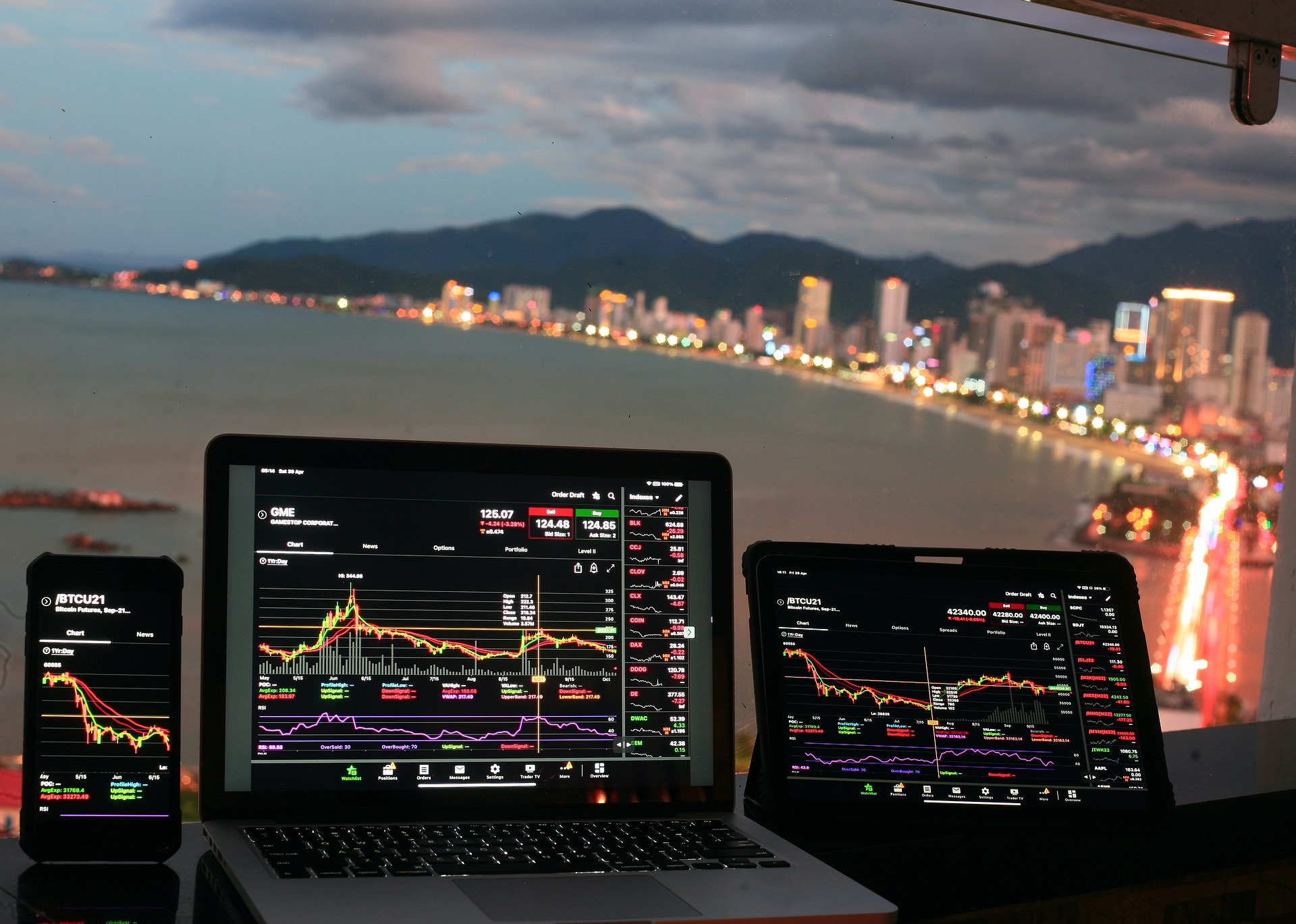The foreign exchange market, or forex for short, is a vast, ever-churning landscape where currencies are constantly traded. Navigating its complexities can be daunting, even for seasoned investors. This is where forex trading robots, also known as forex bots, enter the scene. These automated software programs have captured the imagination of many, promising to streamline the trading process and potentially generate consistent profits. But before diving headfirst into the world of automated forex trading, it’s crucial to understand what these robots are, how they work, and what potential benefits and drawbacks come with using them.
What are Forex trading robots?
Forex trading robots, also known as Expert Advisors (EAs) or automated trading systems, are software programs designed to execute trades in the foreign exchange market based on predefined criteria. These criteria typically include technical indicators, price patterns, and other market conditions. Essentially, Forex trading robots act as a trader’s assistant, continuously monitoring the market and executing trades according to the parameters set by the user.
By automating the trading process, Forex trading robots aim to eliminate the need for human intervention in making trading decisions. This can be particularly advantageous for traders who struggle with emotions such as fear and greed, which can often lead to irrational trading behavior. Additionally, Forex robots can operate 24/7, allowing traders to take advantage of opportunities in the market even when they are not actively monitoring it. Overall, these robots offer traders the potential for increased efficiency, consistency, and discipline in their trading strategies.
Advantages of Using Forex Trading Robots
Forex trading robots offer numerous benefits to traders, enhancing their efficiency, consistency, and overall trading experience. By automating trading processes and eliminating emotional biases, these robots can significantly improve trading outcomes. Here’s a closer look at the advantages of using Forex trading robots:
- Automation of Trading Processes: Forex trading robots automate the process of market analysis and trade execution, saving traders time and effort. They can continuously monitor the market and execute trades according to predefined criteria without the need for manual intervention.
- Elimination of Emotional Trading: Emotions such as fear and greed can often cloud judgment and lead to irrational trading decisions. Forex robots operate based on predefined algorithms, eliminating the influence of emotions and ensuring trades are executed based on logic and data.
- Backtesting and Optimization: Forex trading robots allow traders to backtest their strategies using historical data to assess their effectiveness. This enables traders to refine and optimize their strategies before deploying them in live market conditions, potentially improving their overall performance.
- Ability to Trade 24/7: Unlike human traders who need rest, Forex trading robots can operate 24 hours a day, five days a week, allowing traders to take advantage of trading opportunities across different time zones and market sessions.
Overall, the use of Forex trading robots offers numerous advantages for traders, ranging from increased efficiency and consistency to reduced emotional stress and improved accessibility, making them a valuable tool in the arsenal of modern traders.
Factors to Consider When Choosing a Forex Trading Robot
When selecting a Forex trading robot, it’s crucial to consider several key factors to ensure that the chosen robot aligns with your trading goals and preferences. Here are some important factors to keep in mind:
- Performance History: Evaluate the performance history of the Forex trading robot by analyzing past trades and results. Look for robots with a proven track record of profitability and consistency over a significant period.
- Customization Options: Consider the level of customization offered by the robot. Look for robots that allow you to adjust trading parameters and strategies to suit your preferences and risk tolerance. Customizability enables you to tailor the robot’s behavior to your specific trading style.
- Risk Management Features: Assess the risk management features incorporated into the robot. Look for features such as stop-loss orders, take-profit levels, and risk-adjusted position sizing. Effective risk management is essential for preserving capital and minimizing losses during adverse market conditions.
- Customer Reviews and Support: Research customer reviews and feedback on the Forex trading robot from reputable sources. Pay attention to user experiences and testimonials to gauge the robot’s reliability and performance. Additionally, ensure that the robot provider offers responsive customer support to address any issues or concerns promptly.
- Compatibility with Broker: Check the compatibility of the Forex trading robot with your chosen broker’s trading platform. Ensure that the robot is compatible with the trading platform you intend to use and that there are no compatibility issues or restrictions imposed by the broker.
By considering these factors when choosing a Forex trading robot, you can make an informed decision that aligns with your trading objectives and preferences. Taking the time to research and evaluate different robots will help you select a robot that enhances your trading experience and improves your overall performance in the Forex market.
How to Use Forex Trading Robots Effectively
To ensure the effective use of Forex trading robots, consider the following strategies:
Research and Due Diligence
Before deploying a Forex trading robot, conduct thorough research to understand its functionality, performance history, and user reviews. Ensure that the robot aligns with your trading goals and risk tolerance. Additionally, perform due diligence on the market conditions and trends to identify suitable trading opportunities for the robot to capitalize on.
Testing on Demo Accounts
Before using a Forex trading robot in live market conditions, test it extensively on demo accounts to evaluate its performance and reliability. Use demo accounts to simulate real-market conditions and assess how the robot responds to various scenarios. This testing phase allows you to fine-tune settings and build confidence in the robot’s capabilities before engaging in actual trading.
Common Misconceptions About Forex Trading Robots
Here are some common misconceptions about Forex trading robots:
- Guaranteed Profits: One of the most prevalent misconceptions is that Forex trading robots guarantee profits. Many traders mistakenly believe that using a robot will automatically lead to consistent gains in the market. However, it’s important to understand that trading involves inherent risks, and there are no guarantees of profits, even with the use of a robot.
- Replacement for Knowledge and Experience: Another misconception is that Forex trading robots can replace the need for knowledge and experience in trading. Some traders believe that they can rely solely on the robot to make profitable trading decisions without understanding the underlying principles of the Forex market. However, while robots can automate certain aspects of trading, they still require oversight and guidance from knowledgeable traders to be effective.
- Set-and-Forget Trading: Many traders mistakenly believe that they can set up a Forex trading robot and forget about it, expecting it to generate profits indefinitely without any intervention. However, the reality is that market conditions are dynamic and constantly changing. Traders need to regularly monitor the performance of their robots and make adjustments as needed to adapt to evolving market conditions.
By dispelling these common misconceptions, traders can have a more realistic understanding of what Forex trading robots can and cannot achieve, allowing them to make informed decisions when incorporating robots into their trading strategies.
Risk Management Strategies for Forex Trading Robots
Effectively managing risks is crucial when utilizing Forex trading robots. Here are key strategies to implement:
- Setting Stop-Loss and Take-Profit Levels: Establish clear stop-loss and take-profit levels for each trade executed by the Forex trading robot. This helps limit potential losses and lock in profits at predefined points, ensuring that trades are closed automatically when reaching specified thresholds.
- Diversification of Trading Strategies: Employ a diversified approach by using multiple Forex trading robots with different strategies or parameters. Diversification helps spread risk across various trades and strategies, reducing the impact of a single losing trade on the overall trading portfolio.
- Using Proper Position Sizing: Determine appropriate position sizes for each trade based on your risk tolerance and the size of your trading account. Avoid over-leveraging, as it can amplify both gains and losses. Implementing proper position sizing ensures that the impact of any individual trade on your overall capital is controlled.
- Monitoring Market Conditions: Regularly monitor market conditions and be prepared to adjust the parameters or deactivate the Forex trading robot if necessary. Market dynamics can change, and staying vigilant allows you to intervene when required, mitigating potential risks associated with unexpected market movements.
By incorporating these risk management strategies, traders can enhance the performance of their Forex trading robots while safeguarding their capital from undue exposure. Remember that risk management is an integral part of successful trading, whether done manually or with the assistance of automated systems.

